I think I may have overdone it on photos this time, but hey, I find it interesting, so therefore, so should you, right? I can’t really tell, I’m not getting many comments either here or on Facebook when the blog posts show up – the Instagram photos with minimal captions get far more attention. Maybe it’s the limit of the attention span for this kind of stuff. But, I’m going to go blithely ahead and continue. Yesterday’s ventures were off to Magdalena and Pueblo Libre (formerly Magdalena Vieja), two neighborhoods on the west side of the city, a bit northwest of here.
Breakfast was of prime importance, and there was no question that my first stop was going to be Antigua Taberna Queirolo, the oldest extant restaurant in Lima, run by and attached to the Santiago Queirolo winery and pisco distillery. The 22 soles ($7) breakfast special of choice of sandwich (in-house roasted ham is the oft-mentioned top choice here), choice of fresh juice, and a coffee. But being the consummate professional, I can’t very well be in this location, even if it’s 9 in the morning, and not try one of their piscos. Sandwich? Delicious – the tender, juicy pork topped with classic onion and chili salad, and a touch of mayo. And, the pisco, excellent, though given the hour I admit to only drinking about a half of the shot.
The main square of Pueblo Libre, Plaza Bolivár, just a block away is my next stop. Look, I know it’s no image of Jesus on a slice of toast, but I swear I can see an image of Aragon from Lord of the Rings in that tree stump….
My main goal at this plaza is visiting the Museo Nacional de Arqueología, Antropología e Historia del Perú. It’s a beautiful old hacienda with two massive wings that have been converted into a quite stunning museum, and well worth the 10 soles ($3 and change) to enter.
There’s a ton of stuff here, too, each room off the main courtyard covering a different pre-Colombian culture and period. And for those who have been around enough to get the reference, does that last one not look like Jeremy Hilary Boob PhD?
One of the things I’ve found fascinating, and at times frustrating, over the years I’ve been living in South America, is how much emphasis people put on the European side of their origins versus their indigenous roots. It is a bit jarring here when I catch that the two wings of the museum are divided into the History and Pre-History sections. The former being everything since the Spanish conquistadors, the latter being, apparently, before history really started. Seriously?
Heading out of the museum, I’m enroute to my friend Jo’s house. She’s joining me for a visit to the local market. Just outside the museum is this passageway with sidewalk stars, handprints, and signatures of famed Peruvian singers and musicians.
It’s not a long walk, maybe 20 minutes, along Av. Surco. It’s a pretty neighborhood. It’s an area of Lima I’ve not been to before and had no idea what to expect.
I pick up Jo, we walk a few blocks to the Mercado de Magdalena, and wander through. There’s not much that’s new and different to see here, it’s not a market with a particular regional specialty. I can tell she’s been through the market many times before (she used to offer tours), and kind of plunges through heading for specific points of interest, rather than just taking it all in. It’s okay, I pop back for a short while after we part a bit later and spend a bit more time just wandering.
The one thing, at least in local foodie circles, that this market is known for, are stands serving papas rellenas. I have a specific one in mind, but first we head to her favorite, Suki (unmarked, just puesto 302 in the market), where indeed, a very good version of the dish is to be had. The potatoes are creamy, the scant filling quite interesting, with a small amount of beef, lots of onion, black olive, and, a bit of sweetness – raisins? A simple onion salad and chili sauce to accompany. At 3.50 soles, just over a dollar, it’s a steal.
The one I’ve heard about, however, is El Caserito (puesto 858), where owners Alberto and Palma serve up a version that won best of show, so to speak, at the 2011 Mistura gastronomy festival (according to the photo on the wall – they may have also won since, I don’t know). For me, this one wins hands-down. First off, about 50% larger, then, generous filling that’s packed with beef, egg, and spices. The potato is more of a wrapper than anything else here. I also like that their onion salad is more elaborate, with chilies and cilantro. And they offer hot sauce and mayo on the side. It’s worth the extra freight at 6 soles, just shy of two dollars.
Jo shows me a little more of the neighborhood. We part company. I return to the market for a bit. Then head north to my next archaeological venture.
… And find the gates closed at the Huaca Huantille. There’s a security guard and a caretaker there, and the latter informs me that the guide for the place is only there until 1pm on weekdays, and I should come back on Monday. Not a possibility. She sees I’m disappointed and very generously opens the place up for me – let’s me into the small museum, and leaves me to wander and take photos. Nowhere of the huacas I’ve been to on this trip or past ones, is the encroachment of the city on these ancient sites more obvious than here. In fact, they have a “before and after” set of photos showing how prior to starting to restore the site, it had basically been turned into a shantytown. Even today, the buildings bordering on the site, and they really come right up to the edge, aren’t much above slum level.
Back to the hotel, my afternoon relaxing (part of it is just vacation-y relaxing, part of it is that from roughly 2-5pm, the sun is just so blazing here, I don’t want to be outside if I’m not in the shade. I’m already sunburned and peeling, even with precautions.
I’ve planned dinner at a nearby place called Donatello, one of the few spots in the city offering up what looks to be quite fascinating Peruvian-Italian fusion cooking. There are online raves about the place, and given that it’s in the same vein of what we do at Casa SaltShaker, I want to check it out. I arrive and peruse the menu, finding nothing remotely Peruvian about it except one lasagna made with ají de gallina. What gives? Turns out, they used to be located in another part of town and got famous doing the fusion thing. They moved a couple of years ago to Miraflores and for a variety of reasons, decided to go full-on traditional Italian. Much as I like Italian food, it’s not what I came here for, and I offer my apologies, but head out.
There are so many places to checkout, but it’s a Friday night and already prime dining hour. A few phone calls around to the ones at the top of my list, and also a place Jo recommended highly earlier in the day, and I land a spot at…
… Cosme in nearby San Isidro. Now, it’s not the same Cosme as in NYC, a sort of spinoff of the famed Pujol from Mexico City, though interestingly, it opened just a couple of months after that one, and just after the partners behind the place had apparently gone on a little gastronomic tour to NYC. They say the name comes from San Cosme, a district of Lima just a kilometer or two east of where the restaurant is located. And the food’s not modern Mexican, well, not totally, some of it is, some of it is other Latin American cooking reinterpreted. Hmmm….
My waiter assures me that the left hand column of the menu are all quite small plates and a solo person could easily eat 4-5 of them, maybe even 6. The right hand ones are a touch bigger, maybe 2-3. Turns out not. though I’m glad to have tried through four different really interesting dishes from that left hand side, each of them was big enough to share with another person, and I end up eating only about 2/3 of each one. (And, I’m particularly hungry, after all, all I’ve had this day is a sandwich for breakfast, and half each of two stuffed potatoes.)
A fascinating reinterpretation of elotes, a classic Mexican street food, using the big, sweet Peruvian corn, dressed in mayo, chili salt, and grated goats milk feta. Then a lovely couple of grilled octopus tentacles with cubes of avocado and crispy yellow potato cakes – it’s supposed to be dressed with piquillo peppers, but instead has a sweet reduction sauce of some sort. Then on to perfectly grilled slices of sweetbreads with a very sweet corn puree and an almost as sweet wine sauce. Where is the promised kick of ají amarillos? And, finishing up with slow braised hanger steak and vegetables, to be wrapped in tortillas (which have all strangely been cut in half), served with sour cream and avocado mousse.
Overall, love the space, attentive service (though I’m a touch miffed at what to me is a deception on the size of the dishes, I’m a big boy and could have started by ordering just 2-3 and seeing how big they really were). Interesting choices on the background music – for the first half of dinner it’s modern country, along the lines of Rascal Flatts, and then it switches over to Bruno Mars. The food, all good, with a tendency to be, at least from these four dishes, a bit sweet. It’s not cheap – the “small plates” on the menu run from 19-44 soles apiece ($7-14), and the “larger plates” run from 38-68 soles ($13-23). All told, four dishes, a cocktail (an excellent chilcano, made with, apparently, their own homemade ginger ale), I’m in for 186 soles, roughly $60. Then again, I liked it more than any of the other expensive nights out this week, so well worth it.
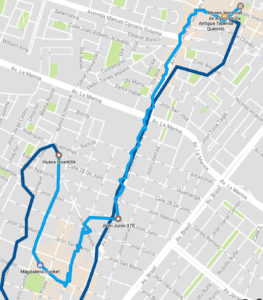
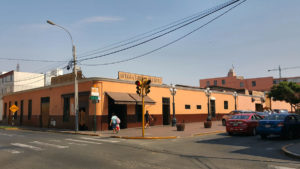
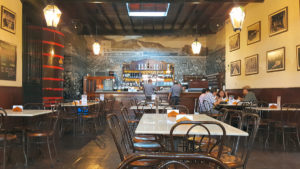
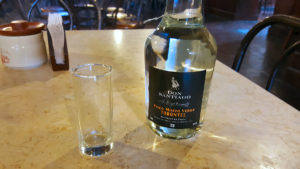
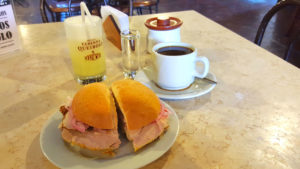
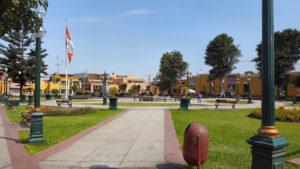
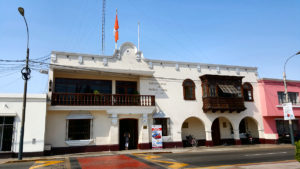
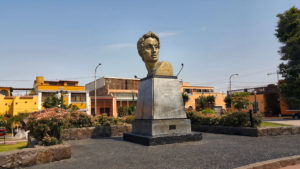
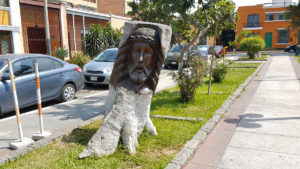
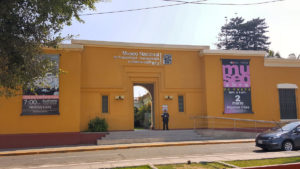
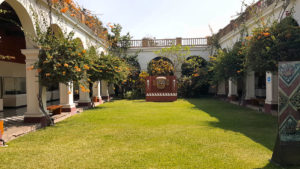
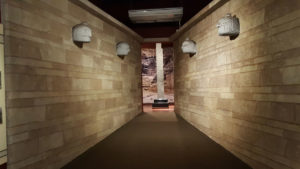
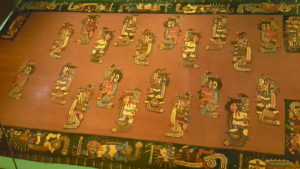
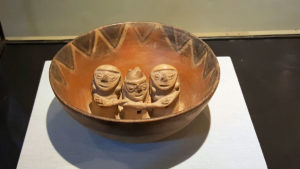
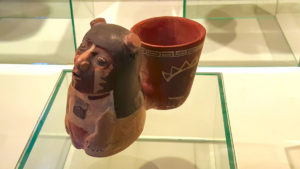
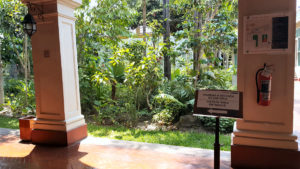

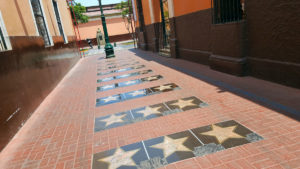
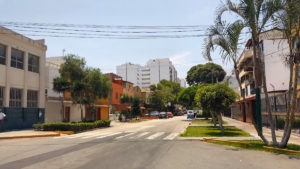
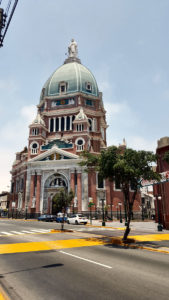
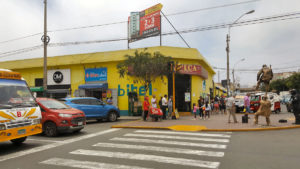
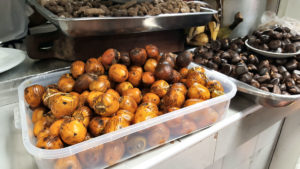
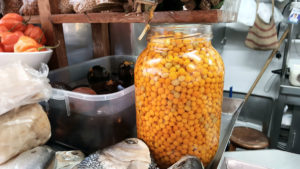
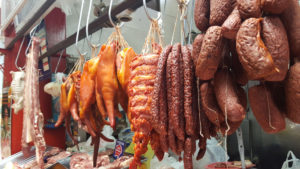
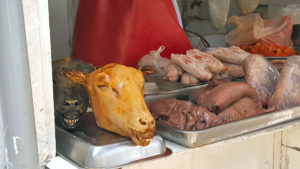

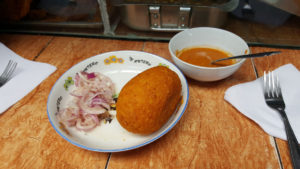
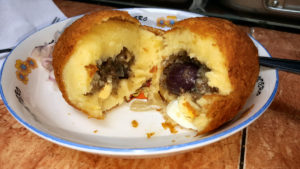
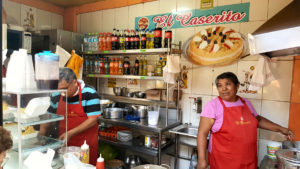
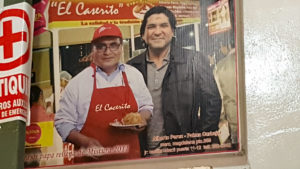
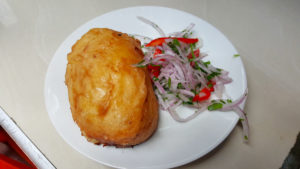
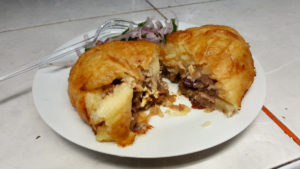
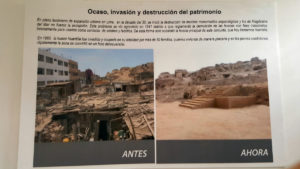
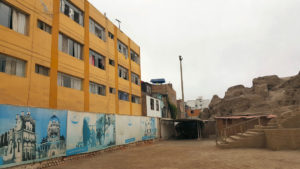
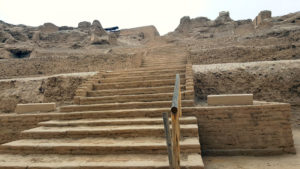
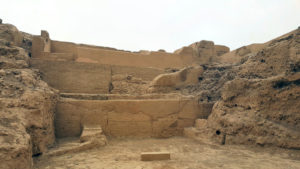
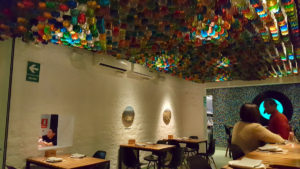
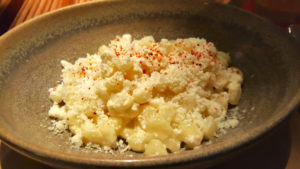
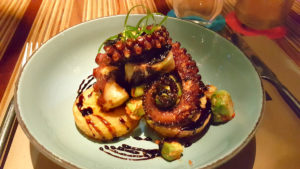
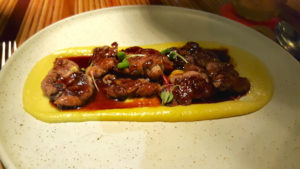
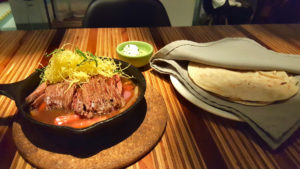
A small clarification. The difference between “history” and “pre-history” is the existence of an understandable written language in a certain civilization, and so the use of “pre-history” at the museum is not pejorative at all. In fact, something that is currently pre-historic may become historic just by philologists being able to decode a written language.
The incas used khipus for recording numerical and accounting information, and there are several hypothesis stating that they also encoded other non-numerical info, but none of them has yet been proved (afaik).
Does that mean we can consider all lawyers and legislators to be pre-historic?
I guess it’s the difference between social science definition and common usage of a term, at least in English, I don’t know if the same difference exists in Spanish.
[…] on Peruvian menus here, so we had to go for one when we saw this. Much more refined than the usual version I’ve seen in Lima, and it could have used a bit more filling in relation to potato, but absolutely […]